The citrus varietal landscape is constantly evolving and it's enriched with new developments every year. But what specific varieties are farmers betting on right now?
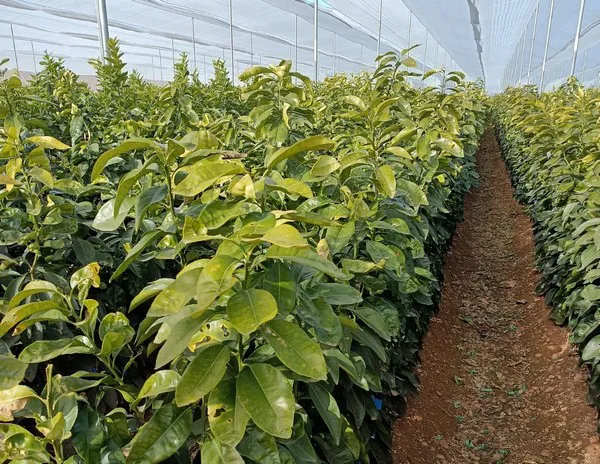
Star Ruby grapefruit plants.
“We are seeing more and more interest in pigmented orange varieties.”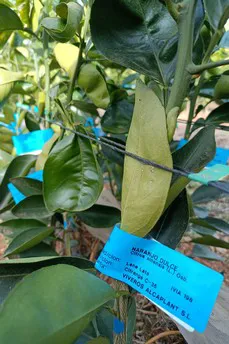 “In oranges, our nursery's best-selling varieties continue to be the same as always: Navelina, Lane Late, and Valencia Delta. Producers also plant royalty-protected varieties, but to a lesser extent,” stated Jordi Sancho, from Viveros Alcaplant. “It's worth noting that these three varieties practically cover the entire citrus campaign. Navelina produces fruit from October to January, Lane Late from January to March, and the Valencia Delta is harvested from April to June.
“In oranges, our nursery's best-selling varieties continue to be the same as always: Navelina, Lane Late, and Valencia Delta. Producers also plant royalty-protected varieties, but to a lesser extent,” stated Jordi Sancho, from Viveros Alcaplant. “It's worth noting that these three varieties practically cover the entire citrus campaign. Navelina produces fruit from October to January, Lane Late from January to March, and the Valencia Delta is harvested from April to June.
(Photo: Lane Late plant with certification label detail)
“However, we also see increasing interest in pigmented orange varieties, both externally and internally pigmented, although sales of these varieties are still small compared to traditional ones.”
“What is clear is that there is a commitment to table varieties,” Jordi stated. There are very few orange crops that have been planted exclusively for the juice industry. In general, farmers allocate low-caliber table oranges for the juice industry because, currently, the costs in Spain do not allow producers to have a production that focused on producing oranges for the juice industry.
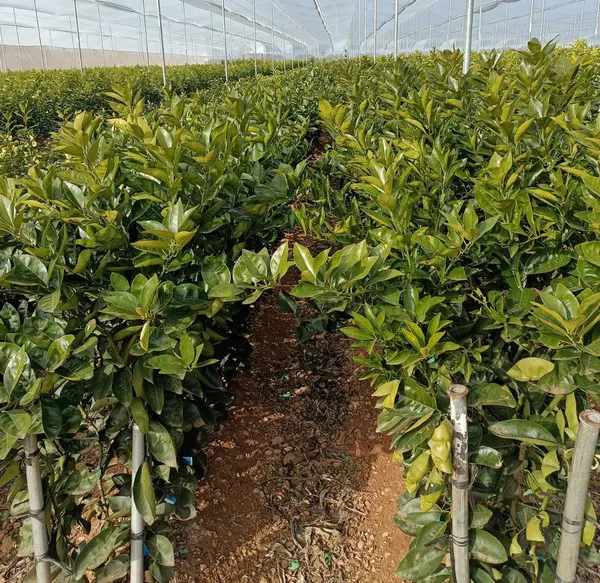
Chislett plants.
“Once again, there are new plantations of Clemenules in Castellon and in the north of Valencia”
“The best-selling mandarin varieties in Alcaplant are of traditional varieties (just like in oranges), such as Oronules, Arrufatina, Clemenvilla, Marisol -which has not been planted for a long time-, and of course of Clemenules.”
“In fact, Clemenules' plant sales had been stagnant for years and were only going to transplants. However, we notice in the last campaign and confirmed this year that there are more and more new plantations of Clemenules. 95% of what we are selling is being planted in Castellon and northern Valencia, where every week we distribute trees, and some new plantations are also being made in Murcia.”
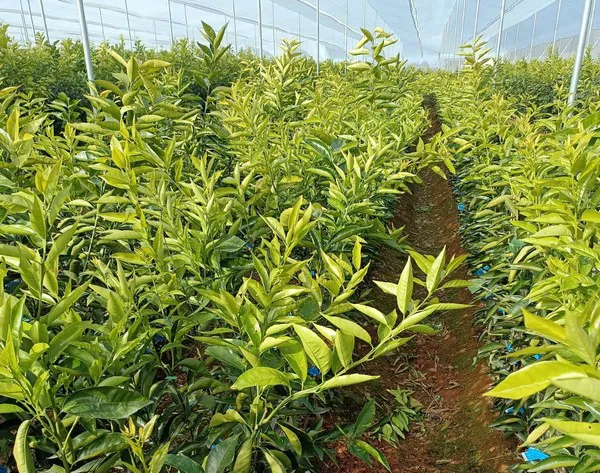
Clemenules plants.
Viveros Alcaplant also exports its citrus plants to southern France and Italy, where the Spanish nursery's varieties have an interesting reception. “In Italy, they mostly grow Fina clementine and the industry is looking for varieties that complement their campaign. We are selling Italy Orogros and Clemenrubí for the period before the harvest of Fina clementine and, for a couple of years, Mandanova or ARCCIT 1614 (Valley Gold) for the subsequent period. They are followed by Tango and Nadorcott, as their sales have been growing in Italy for about 4 years.”
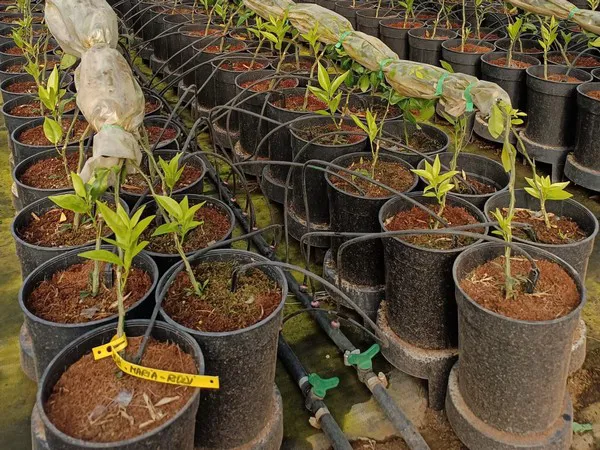
Clemenules grafts.
“The problem in the country is that Italian citrus nurseries are standing still; there are no nursery groups like Avasa in Spain, which works in the search for varieties to offer better materials for the industry. Moreover, Italian nurseries still work with varieties that have already been discarded in Spain. It's the Spanish nurseries that are taking the new mandarin varieties there.”
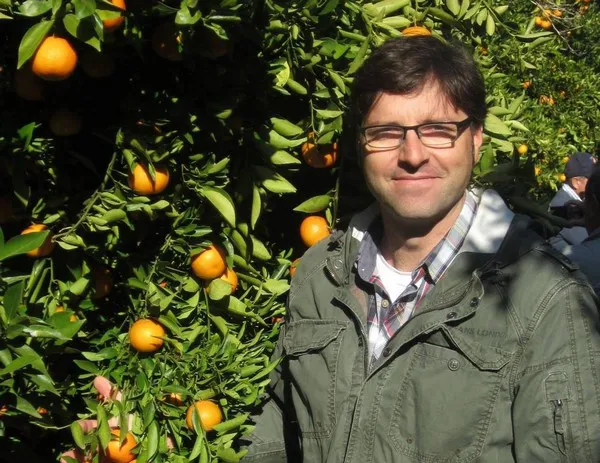
Jordi Sancho.
Producers continue to bet on traditional yellow lemons
Even though there are surprising fruit developments with new colors that challenge the traditional yellow lemon variety, 99% of the plants we sell are Fino or Verna lemons, stated Jordi Sancho. “Specifically Fino 95, Fino 49, and Verna 51, which cover the entire campaign.”
The Verna variety has been affected by weather issues more strongly than other varieties in recent years, but it has not ceased to be an important option for farmers, Jordi stated.
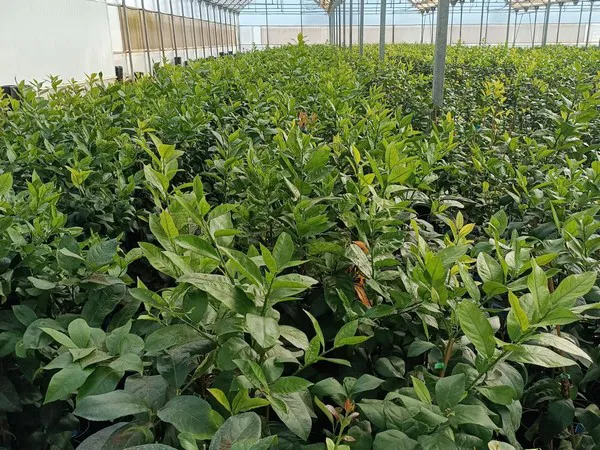
Fino 95 lemon plants.
“There are many different citrus varieties. A lot of people ask me which is the best one to plant and I always answer them that any variety is profitable as long as they do a good job. From my experience, producers with traditional varieties continue to be profitable as long as they have well-kept farms and continue to invest in their plantations.”
That being said, citrus cultivation has gone through difficult times in recent years. The profitability of the activity has been in question and has prevented new investments in varieties or renovation of fields, leaving a greater footprint in traditionally smallholder production regions such as the Valencian Community.
“In these areas, we see farms that generate little income, with 25-year-old trees, without the capacity to make new investments and for which there is no generational replacement; it is a problem that has been talked about for years, but that can already be observed. As a result, large companies are buying the land and the territories that used to have a lot of citrus producers are now in the hands of a few people. It's worth noting that, in addition to being a source of income, citrus cultivation is very important at a social level in these regions.”
For more information:
Viveros Alcaplant
C/ Sunyer 87,89
Alcanar 43530 (Tarragona)
Tel.: +34 654 757 100 / +34 679 362 269
www.viverosalcaplant.com
